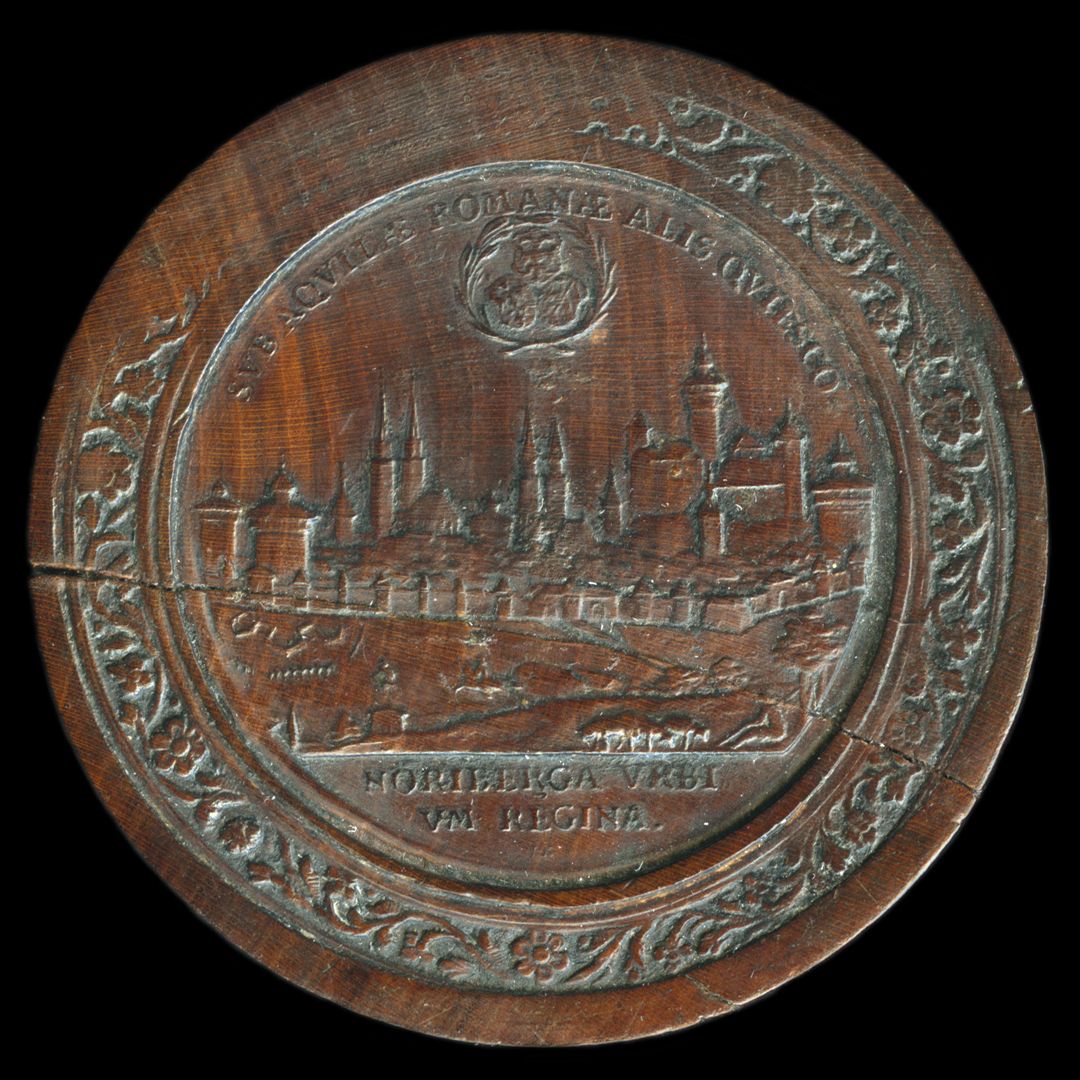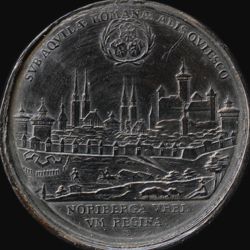Martin
Brunner
medallist,
born Nürnberg, 28. Feb 1659
died Nürnberg, 09. Nov 1725
Son of a button maker, ∞ 6.4.1681Catharina, daughter of Heinrich Leykam.
1674-77 apprenticeship with Johann Jakob Wolrab. In 1677 he worked in Prague and between 1677 and 1685 repeatedly in Breslau. In 1680 he returned to Nuremberg via Dresden and Leipzig. From 1688 until after 1720, he was listed in the official register as a seal engraver.
He often signed his works "MB".
Among other things, he specialized in medals in gold, silver, bronze and wooden board stones. His clients included almost all European courts, but he also worked with Georg Friedrich Nürnberger and Caspar Gottlieb Lauffer. His high-quality works are characterized among other things by a naturalist. They often combine portraits of rulers with historical events such as coronations and military successes.
Brunner is considered an outstanding representative of the French-influenced Baroque medal. In 1691 he sold a house in the lower Taschental with his mother and siblings (pre-war numbering Rotschmiedsgasse 3, see Karl Kohn's house register). In the end he lived at the Wöhrdertürlein and was described in the Book of the Dead as a coin, steel, iron and seal cutter.
MuS: GÖTEBORG, Konst-Mus. MUNICH, BNM. NAMUR, Mus. Archéol.
NÜRNBERG, GNM. -MStN. TURIN, Mus. Civ. VIENNA, KhM, Coin Cab.
And in many other museums and collections, see: AKL; Thieme-Becker; Will, Münzbel. Vol. I, p. 113 f. and 141, Vol. II, p. 141, Vol. III, p. 329 f.; Zahns Jb. I, 1868;
Baroque, 1962, pp. 122, 131; Jamnitzer, 1985; Erlanger 1991; Fischer/Maué, 2000. exhibited: 1906/2; 1963/8; 1989/10.
(quoted from the Nuremberg Artists' Dictionary, edited by Manfred H. Grieb)
Style: Baroque

